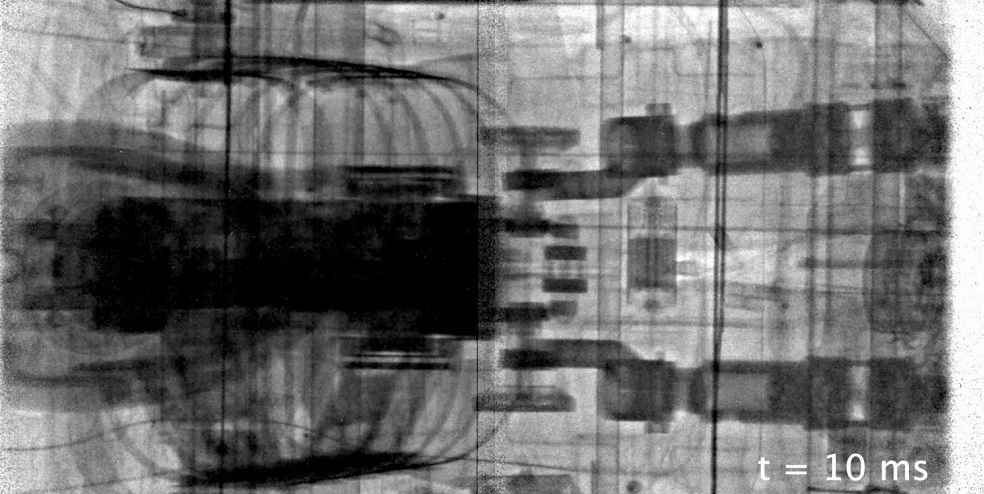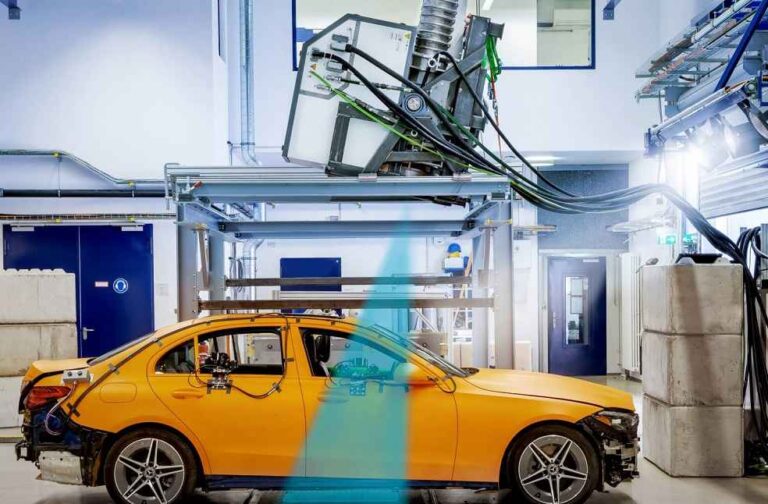Mercedes-Benz, collaborating with the Fraunhofer-Institute for High-Speed Dynamics, EMI (Ernst Mach Institute), has achieved a groundbreaking feat by executing the world’s inaugural X-ray crash test on an actual car. This test, conducted at EMI’s research facility in Freiburg, Germany, represents a quantum leap in automotive safety testing, providing an unparalleled view into the internal dynamics of a vehicle during collision.
The procedure involved a Mercedes-Benz C-Class saloon subjected to a side impact crash at 60 km/h. Distinguishing this crash test is the application of high-speed X-ray imaging, utilizing a linear accelerator to capture the event from above. This advanced technology elucidated the internal deformations within the vehicle and the test dummy during the impact, offering insights previously hidden.
Utilizing ultrashort X-ray technology, capable of capturing up to 1,000 images per second, constitutes a significant advancement in crash testing methodologies. The linear accelerator emits photon energy up to nine megaelectron volts, penetrating vehicle materials to deliver sharp, motion-blur-free images. These images facilitate a thorough analysis of safety-relevant components and dummy physiology, deepening our comprehension of crash dynamics and potential injuries.

This test validates the application of high-speed X-ray technology in crash testing and underscores Mercedes-Benz’s longstanding dedication to safety innovation. Markus Schäfer, of Mercedes-Benz Group AG, emphasized this achievement’s importance, reaffirming the company’s pioneering role in automotive safety engineering. Insights from this test are set to influence safer vehicle development, cementing the company’s commitment to its ‘Real Life Safety’ philosophy.
The partnership with Fraunhofer EMI underscores a shared commitment to leveraging technology for safety advancements. Dr. Malte Kurfiß and Prof. Dr. Paul Dick, representing Fraunhofer EMI and Mercedes-Benz AG, praised the test for generating valuable data that will inform vehicle design and digital prototyping. This approach to safety testing exemplifies the potential of interdisciplinary collaboration to elevate automotive safety standards.

The X-ray crash test aligns with Mercedes-Benz’s comprehensive safety strategy, including rigorous testing protocols with up to 900 crash tests and 1,700 sled tests annually. The company’s safety initiatives extend to electric vehicles, as demonstrated by the crash test between two fully electric models, highlighting the brand’s safety commitment across different propulsion systems.
The Fraunhofer EMI, known for its expertise in the dynamics of fast processes, played a crucial role in this project. The institute’s work covers a wide range of applications, emphasizing reliability, safety, and sustainability across industries.
This pioneering X-ray crash test not only marks a significant technological breakthrough but also opens a new chapter in automotive safety. As Mercedes-Benz and Fraunhofer EMI continue to innovate, the future of vehicle safety promises enhanced protection for occupants and greater resilience against accidents.
AUTO TECH | Xiaomi Unveils First EV, Dives into Market with Tech and Bold Investment





